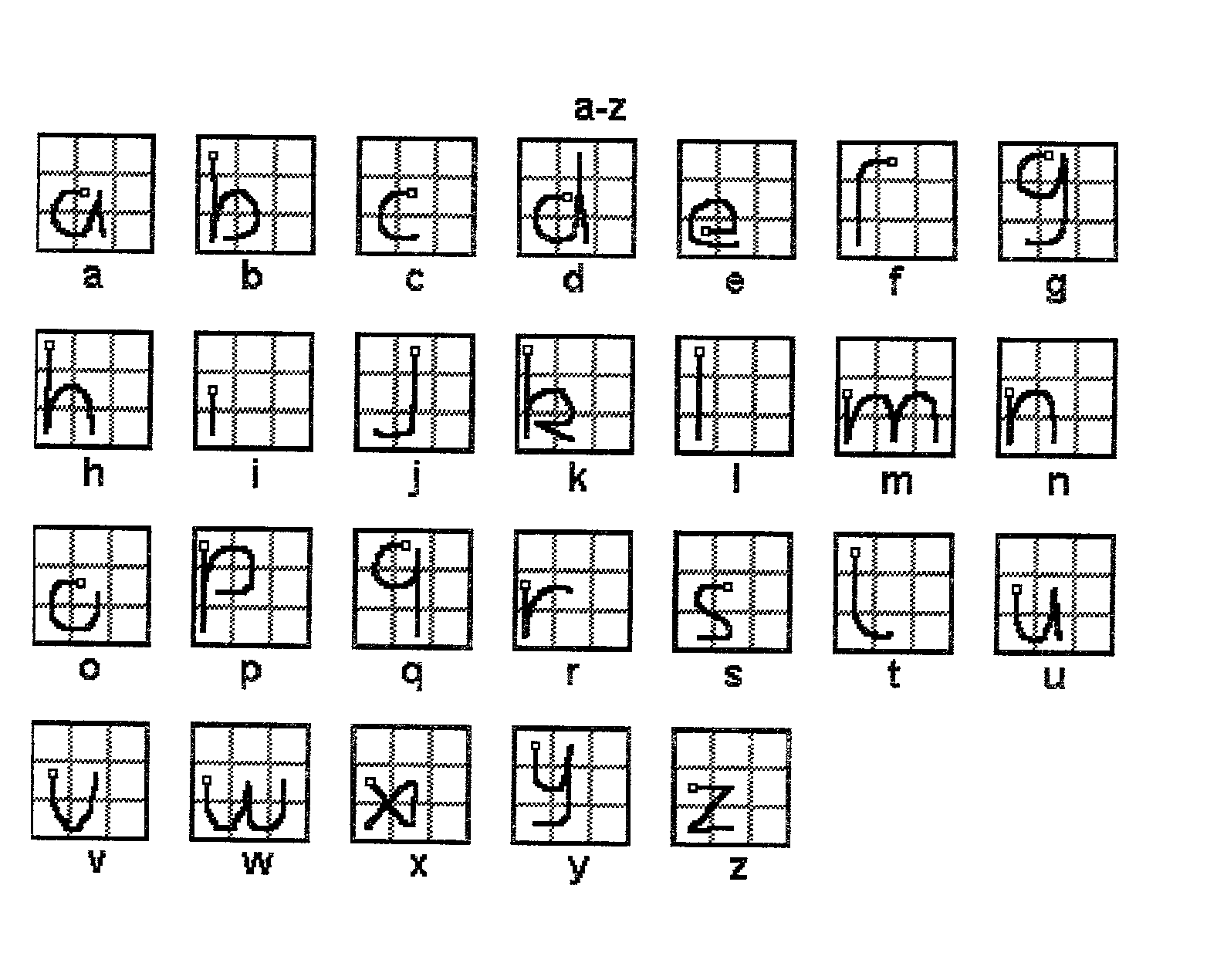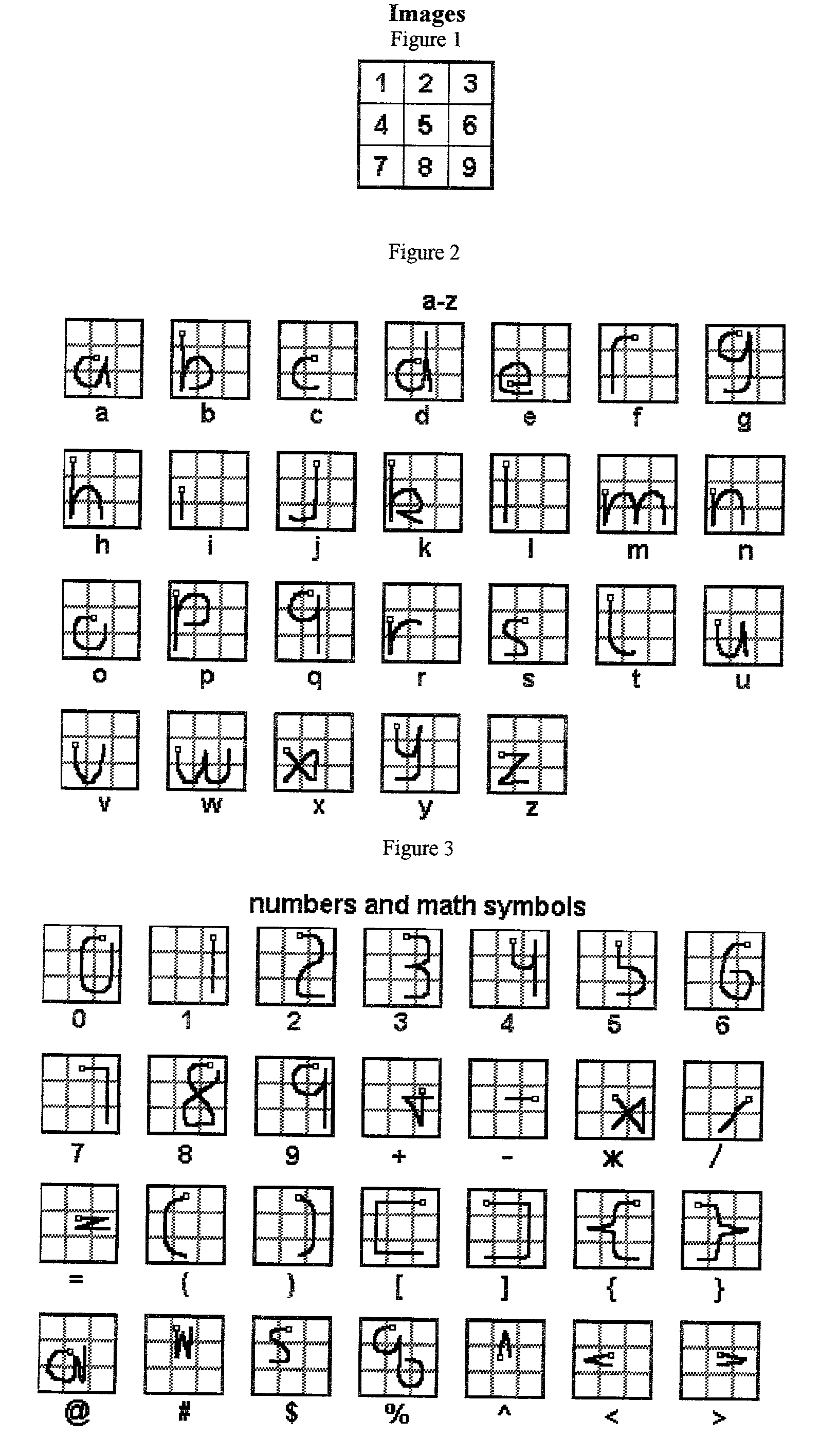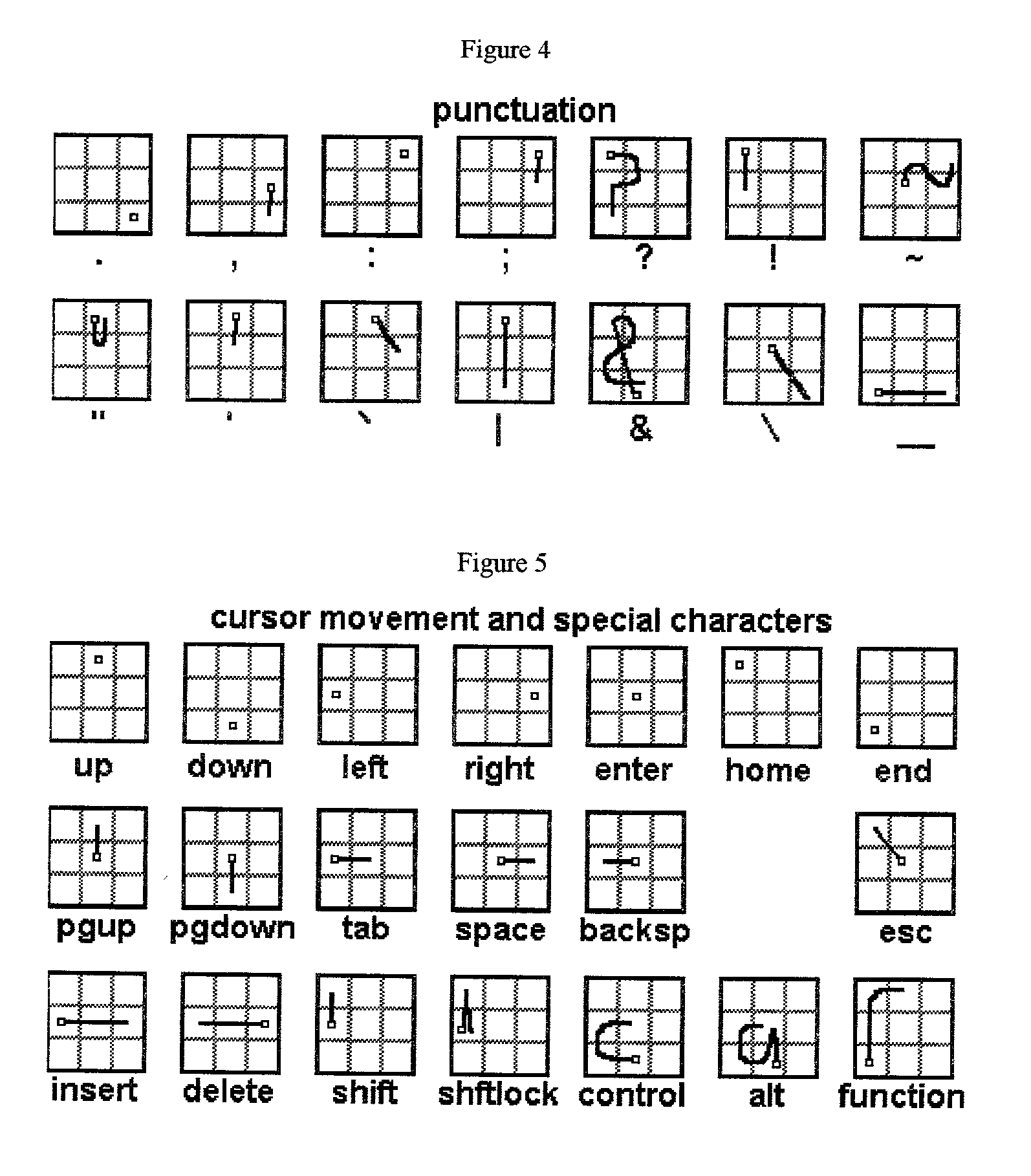Method of data entry
- Summary
- Abstract
- Description
- Claims
- Application Information
AI Technical Summary
Benefits of technology
Problems solved by technology
Method used
Image
Examples
example 3
[0016] Select segment 5 then segments 4, 7, 8, 5, and 8. You have drawn the letter a and the computing device would recognize this sequence 547858 as the letter a.
[0017] My method defines similar unique sequences for all the letters a to z, the numbers 0 to 9 and in fact all the characters found on a standard computer keyboard.
[0018] Lifting the pointer, in the case of a using a touch pad, or pausing for a predetermined length of time, in the case of using a key pad, normally signals the end of the character being drawn. Holding the pointer in the last position or holding the last key for a predetermined time could also be used to signal both the end of the character and then also repeat the character as long as that position is held.
[0019] Special Rules:
[0020] By following certain rules, the sequence and order of keys or regions selected becomes even easier to learn and remember.
[0021] See FIG. 2. My method uses the following rules for the letters a-z:
[0022] All the letters are dra...
example 1
[0055] When the user draws the letter `"o", the entered sequence is 54785. A normal lookup would proceed through the table looking for a match for 54785. A better method is to use a reverse lookup, proceeding through the lookup table looking for a match for each table entry in the entered sequence. Using the table above would first look for a match to 2389 in the entered sequence. It would not be found, so the search would continue with 547858. That would also not match because of the final 8 in the table sequence would not be found in the entered sequence. The search would then continue until a match is found for the letter "o".
example 2
Illustrating Required Selections
[0056] The table sequence for the number 2 is 2389. Any of the sequences 236589, 236989, or 23698569 would be recognized as the number 2, as long as the sequence drawn does not match a more complicated character sequence first. This is accomplished by only looking for the required selections in the proper order in the generated sequence. Each of the entered sequences 236589, 236989 and 23698569 have all the required selections 2389 in the proper order, with the extra selections in the generated sequence being simply ignored.
[0057] This lookup algorithm and the exact structure of the lookup table itself provide a great deal of intelligence and flexibility in recognizing characters.
[0058] FIGS. 1 through 5 illustrate only one possible implementation of my method. It would be obvious that the method could be implemented with a larger array of keys and different sets of character sequences and additional characters could be easily added. A larger array of...
PUM
 Login to View More
Login to View More Abstract
Description
Claims
Application Information
 Login to View More
Login to View More - R&D
- Intellectual Property
- Life Sciences
- Materials
- Tech Scout
- Unparalleled Data Quality
- Higher Quality Content
- 60% Fewer Hallucinations
Browse by: Latest US Patents, China's latest patents, Technical Efficacy Thesaurus, Application Domain, Technology Topic, Popular Technical Reports.
© 2025 PatSnap. All rights reserved.Legal|Privacy policy|Modern Slavery Act Transparency Statement|Sitemap|About US| Contact US: help@patsnap.com



